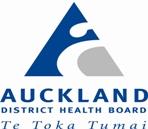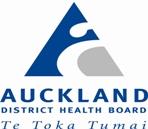link to page 2 link to page 2 link to page 2 link to page 3 link to page 3 link to page 3 link to page 3


If printed, this document is only valid for the day of printing.
Response to Suicidal Ideation or Gestures
Document Type
Guideline
Function
Clinical Practice, Patient Care
Directorate(s)
Mental Health
Department(s) affected
Child & Family Unit
Applicable for which patients, clients Children and young people
or residents?
Applicable for which staff members? Crisis staff on duty, Child and Adolescent Psychiatrist
responsible for cover
Key words (not part of title)
n/a
Author - role only
Charge Nurse Manager
Owner (see
ownership structure)
Service Clinical Director - Child & Family Unit
Edited by
Clinical Policy Facilitator
Date first published
Yet to be determined
Date this version published
25 May 2018 - reviewed
Review frequency
3 yearly
Unique Identifier
PP3011/PCR/007
Contents 1.
Purpose of guideline 2.
Frequency
3.
Procedure
4.
Legislation 5.
Associated Auckland DHB documents 6.
Disclaimer 7.
Corrections and amendments
Back to Contents
Suicidal-Ideation_2018-05-25.docx
Page 1 of 3


If printed, this document is only valid for the day of printing.
1. Purpose of guideline
To promote a safe and consistent approach in response to children and young people presenting
to health and other professionals with suicidal ideation or gestures, and suspicion of such by
others.
2. Frequency
Each time a child presents with suicidal ideation or gestures. This issue presents randomly at the
average rate of two per week in the form of attempted suicide, and more frequently with suicidal
ideation and reports of this by others. New Zealand has an increasingly high rate of completed
suicide amongst youth, especially male aged between 15 - 24 years.
3. Procedure
Safe and consistent approach
Follow the steps below to promote a safe and consistent approach in response to children and
young people presenting to health and other professionals with suicidal ideation or gestures, and
suspicion of such by others.
Step
Action
1. Gather and record information about suicidal gestures or thoughts as it is given.
2. If gathering or eliciting information directly from young person, inform them of your
professional responsibility and intention to disseminate information to appropriate
others. This can include negotiation with young person about who others are, except
the responsible Child & Adolescent Psychiatrist and associated staff who must be
informed.
3. If gathering and eliciting information from others, including staff, parents, and people
referring from the community, document this information, in conjunction with crisis
intervention process (as documented in this manual).
4. Assess severity, history and, frequency of ideas or gestures and risk status of young
person by conducting a psychiatric psychosocial assessment. This must be implemented
by a qualified health professional in consultation with the responsible Child and
Adolescent Psychiatrist. This may also need to be conducted in consultation with
cultural advisors and/or the hospital interpreting service.
5. Assess safety and well-being of young person in relation to current living arrangements,
current mental health status, current physiological status and community support
systems. Follow admission procedure if the safety and well-being of the young person is
clearly and significantly compromised by mental disorder and would be best promoted
and maintained in an inpatient mental health service.
6. If admission is not indicated, or eventually decided upon, devise a safety procedure in
conjunction with the young person, and with responsible adults involved in their care,
Back to Contents
Suicidal-Ideation_2018-05-25.docx
Page 2 of 3


If printed, this document is only valid for the day of printing.
including parents, caregivers, respite services, care and protection, after hours crisis
services, other health and education professionals and if necessary legal or law
enforcement agencies.
In some cases this may need to include peers and/or siblings with whom the young
person is in close contact with, i.e. if accompanied by friend/sibling to the assessment.
7. Inform appropriate people of this plan, preferably with documentation.
8. Arrange follow-up in conjunction with own team or with identified community
supports, and supply documentation of your assessment and plan.
9. If Child & Family Unit service is not the appropriate one to conduct this assessment in
the first instance eg out of area, out of hours, referrer must be directed to appropriate
service and this service informed by telephone, facsimile or other as soon as is
practicable.
4. Legislation
Children, Young Persons, and Their Families (Oranga Tamariki) Legislation Act 2017
Mental Health (Compulsory Assessment and Treatment) Act 1992
Privacy Act 1993
Health Information Privacy Code 1994
5. Associated Auckland DHB documents
Location manual
Admission - Child & Family Unit - Pre-Admission Planning
6. Disclaimer
No guideline can cover all variations required for specific circumstances. It is the responsibility of
the health care practitioners using this Auckland DHB guideline to adapt it for safe use within their
own institution, recognise the need for specialist help, and call for it without delay, when an
individual patient falls outside of the boundaries of this guideline.
7. Corrections and amendments
The next scheduled review of this document is as per the document classification table (page 1).
However, if the reader notices any errors or believes that the document should be reviewed
before the scheduled date, they should contact the owner or th
e Clinical Policy Facilitator without
delay.
Back to Contents
Suicidal-Ideation_2018-05-25.docx
Page 3 of 3





